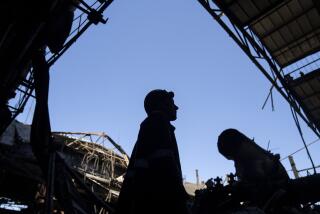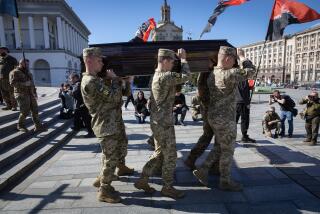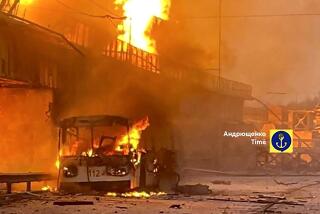‘No one wants to risk getting trapped’: In war, dangers multiply for Ukraine’s miners
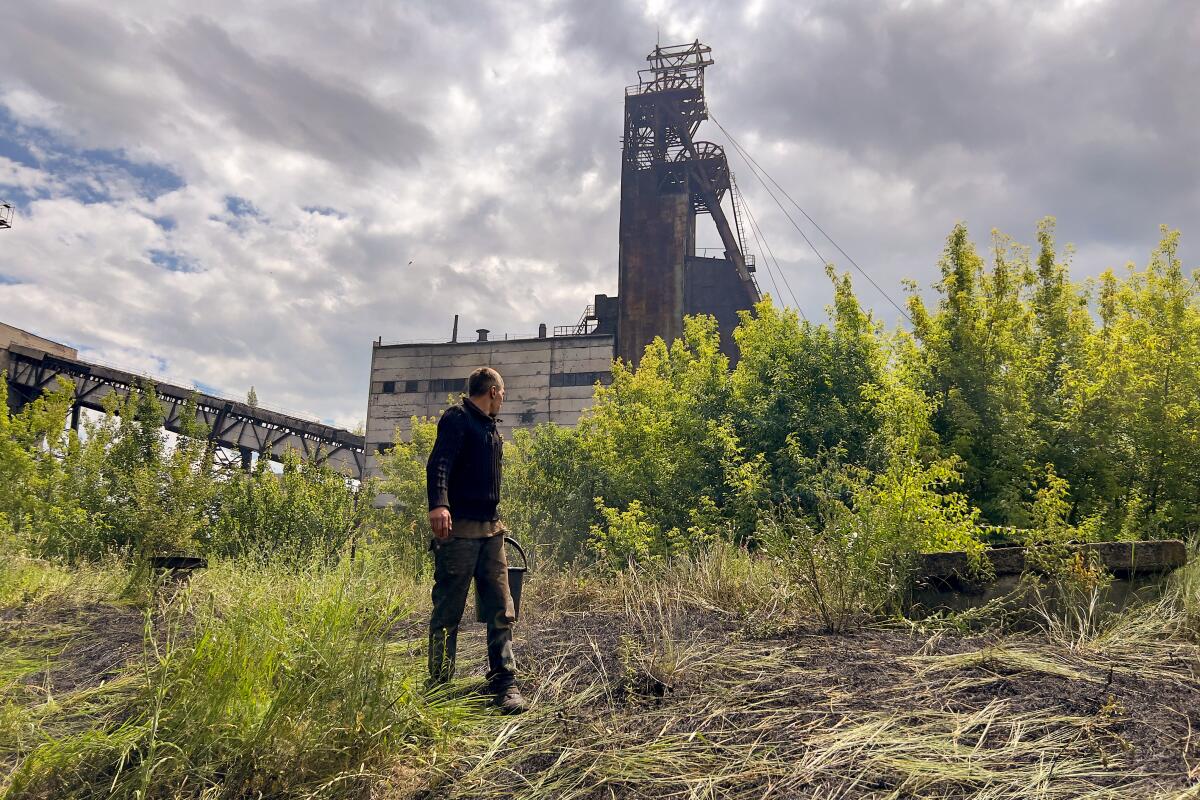
TORETSK, Ukraine — When a 155-millimeter rocket plows into the ground and you’re 2,000 feet under it, you hear nothing — you barely even feel it. Which was why Andriy Podhornay was surprised when his manager came on the walkie-talkie and told the crew in the bowels of the St. Matrona Moskovskaya mine that a Russian artillery strike had just hit. They started moving — fast.
“We were eating when he called us. We immediately went up,” said Podhornay, a wiry 32-year-old with a weathered face.
“No one wants to risk getting trapped down there.”
When he got to the surface, he found the elevator tower wreathed in black smoke and a large crater right behind it. He quickly joined the others to inspect for damage, taking a moment to pick up shell fragments.
The attack last week was the first to strike the mine’s compound, but hardly the first to have battered this landscape. Toretsk, a city with a prewar population of some 32,000, is only a few miles from the so-called contact line, the 2015 demarcation that divided government-controlled parts of eastern Ukraine from those seized by Moscow-backed separatists a year earlier. The town has been a frequent target.
But that conflict — killing more than 14,000 people before a shaky cease-fire took hold — was against relatively ill-equipped irregulars on a stalemated front line. It’s a different situation today with Ukrainian troops facing a Russian army engaged in a slow-roll grind that seizes territory by the day. Toretsk, like so many other mining cities across the eastern Ukrainian region known as the Donbas, may soon be excised from Kyiv’s grip.
That’s a devastating blow to Ukraine’s economy, said Alina Zuikovska, former head of sustainable development at the DTEK, Ukraine’s largest private energy company and a major investor in the nation’s coal mines. But it also inflicts “serious psychological trauma” on the very idea of what it means to be Ukrainian.
“Donbas is the personification of the industrial heart of the country,” Zuikovska said. “The loss of this region is the loss of economic identity for Ukrainians.”
For the miners, it delivers the coup de grace to an endangered way of life, one that for many here seems almost a birthright, or generational curse, depending on how you look at it.
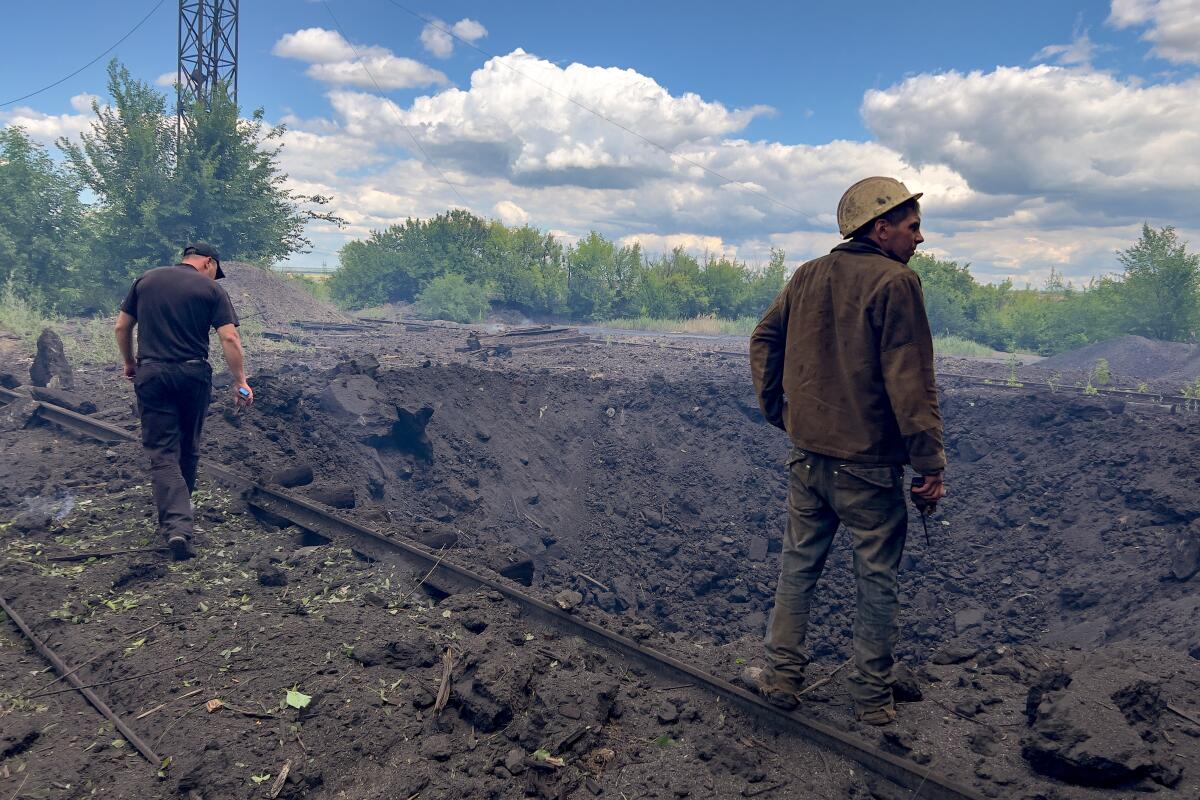
The Donbas is a powerhouse of coal production, its terrain virtually defined by skeletal elevator towers and slag heaps known as “terrikons.” The name Donbas is a portmanteau of the Donets coal basin, and home to most of the coal riches — 44 billion tons as of 2020, Zuikovska said — that once made Ukraine the third-largest producer in Europe and holder of the world’s sixth-largest reserve. The coal dug from here fueled the Russian empire, then the Soviet Union, whose propagandists depicted the region in one poster as a heart pumping blood to factories all over the U.S.S.R. After Ukraine won its independence in 1991, the region’s coal-fired thermal plants provided almost a third of the country’s energy needs and powered its metallurgical sector.
But much of that has since been undercut, whether by government neglect and corruption or by conflict, first in 2014 when roughly two-thirds of coal mines fell under separatist control, and now the Russian invasion. In 1990, Ukraine produced 164 million tons of coal; that figure was halved by 2013 — then more than halved again in the years after the war against the separatists. Even before Russia’s campaign, many mines — especially those owned by the states — were unprofitable and had to be shuttered.
“The coal industry was in crisis much earlier than the war, because we have no systematic vision on how to develop it,” said Sergey Kuzyara, a prominent coal mining businessman who escaped from Donetsk city in 2014 and now lives in the capital, Kyiv.
Lack of investment had ensured the mines were working well below capacity, he said. Worse, the Ukrainian government’s coal stockpiles coming into this year amounted to a third of what they should have been, meaning there isn’t enough fuel for the winter months — even as the price of coal is increasing worldwide.
Toretsk is typical of the economic devastation befalling the Ukrainian mining industry. Once known as the “city of mines,” all but two of its original seven have shut down. The approaching invasion had already pushed most of the city’s 32,000 people to leave; those who stayed behind didn’t have the luxury of choice.
“We hear shells all the time now. Of course it’s risky to stay, but I don’t have any other option but to work,” Podhornay said. He added that he had sent his parents and his sister to the west, to Dnipro city. He stayed behind to keep earning his roughly $350 monthly salary. (That’s assuming the company paid on time, which it hasn’t for months.)
Podhornay began working in mines at 17, right when he finished high school. The intervening 15 years — of enduring a life underground, of watching the Donbas descend into conflict and now a full-fledged war — had aged him: His face was that of an older man, and his hair was streaked with a white that even the coal dust couldn’t conceal.
Back when Podhornay first stepped into St. Matrona, it employed hundreds and was a mainstay of the local economy. But since last year the mine hasn’t been operating; the government sued to get the lease back from Coal Energy, a Ukrainian company, for non-payment of salaries, insurance premiums and wages. Podhornay is part of a skeleton crew that normally arrives before 7:30 in the morning for maintenance, including the daily pumping out of groundwater.
Some might think the bottom of a mine shaft is the best place to be during the relentless artillery and rocket assaults peppering the Donbas. But they’d be wrong. Even at the best of times, descending into a mine is risky business.
In fact, Podhornay was lucky to be alive: Had the shell landed a few yards to the right, it would have smacked right into the elevator tower, leaving the crew trapped at the bottom. It could have hit the nearby relay, cutting power for the pumps that remove groundwater and the methane buildup that imperils any mining operation. Even with nothing essential badly damaged, fragments of the shell had started little fires all around the mine that, if left unchecked, could destroy vital equipment. Podhornay and the others ran to stamp out and pour buckets of water on the flames.
It doesn’t matter how advanced your mine is when an artillery war is raging nearby, whether it’s the tired, Soviet-era infrastructure of St. Matrona or a more developed facility such as the DTEK mine in Pershotravensk, a city 60 miles east of Dnipro. But when it comes to safety of operation, the comparison is akin to a ‘90s-era Nokia versus the newest iPhone.
Descending 600 feet in an elevator, chief engineer Oleg Bilousov, 47, said the DTEK mine has an underground road network more than 100 miles long. Workers have belt-hung digital gauges to measure methane and toxic gases, use GPS to keep track of their whereabouts and employ special fireproof smartphones on QR codes to order maintenance. The mine even holds the record for deepest place in Ukraine with Wi-Fi (1640 feet, in case you’re wondering).
Gone are the days of pickaxes, but the faces of the workers manning the giant saw as it cut into the seam glistened with exertion, the coal dust in swirls on their foreheads. They would spend a good 20 minutes in the company showers washing dust out their nostrils.
Perhaps those hardships are part of what spurs the atavistic bond between miners, an impulse that makes sons follow fathers and grandfathers down the elevator shaft every day.
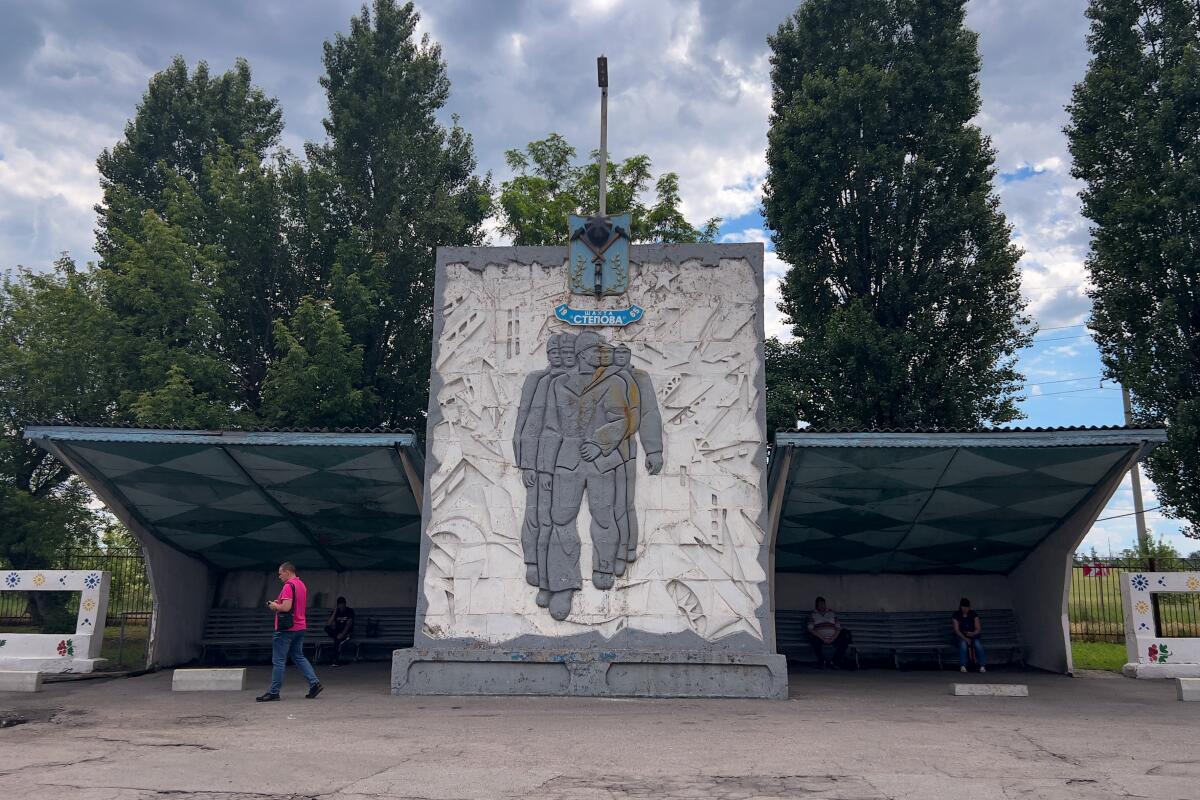
“People who work on their mines, it’s work for life. When they lose them, they have to change everything,” Bilousov said, his face turning serious.
He started as a miner 19 years ago and rose through the ranks to management. He had never thought of leaving the job.
“I’m proud that it’s such hard work,” he said. “When you leave it for something else, it just doesn’t compare.”
It’s easy to spot how central that pride is for the Donbas’ identity. Tour through mining companies’ head offices and you’ll see the dour visages of past directors — tough men with rows of august-looking medals pinned to their chests — glaring down from pictures hung in the hallways.
Wall sculptures of miners lined up together to dig out a seam; a statue of a miner triumphantly holding up a chunk of coal; signs extolling the bravery of the workers in their subterranean toiling: No self-respecting mining town can be found without at least one such paean to the shakhtyur (“miner” in Ukrainian). Losing the mines means removing the very reason the towns exist.
“Stopping production means stopping life in these communities,” Zuikovska said.
The war has done that.
Yet the legacy of mining in the Donbas may end up being less about identity than an ecological disaster. Mines never really shut down even when they’re depleted: The contaminated groundwater needs to be pumped out and disposed of so as not to dirty nearby rivers. And because mines are often hydrologically connected — safety measures allow excess water to flow to another shaft when one is flooded — abandoning one puts others miles away at risk. That’s not to mention the issue of land subsidence or the buildup of enough methane gas to spur earthquakes and explosions.
But in the meantime, Podhornay had more immediate concerns. The sound of shelling persisted in the distance; there would be no more work that day. He quickly changed into street clothes, not even bothering to wash his face before he flagged down Konstantin Nikolayivich, the head mechanic, who was ferrying people out of the area with his car.
Even with the Russian army closing in by the day, even with no real mining work to be had at St. Matrona, he knew he would report back in two days for his six-hour maintenance shift. He was, after all, a miner, he said: What else could he do?
More to Read
Sign up for Essential California
The most important California stories and recommendations in your inbox every morning.
You may occasionally receive promotional content from the Los Angeles Times.
